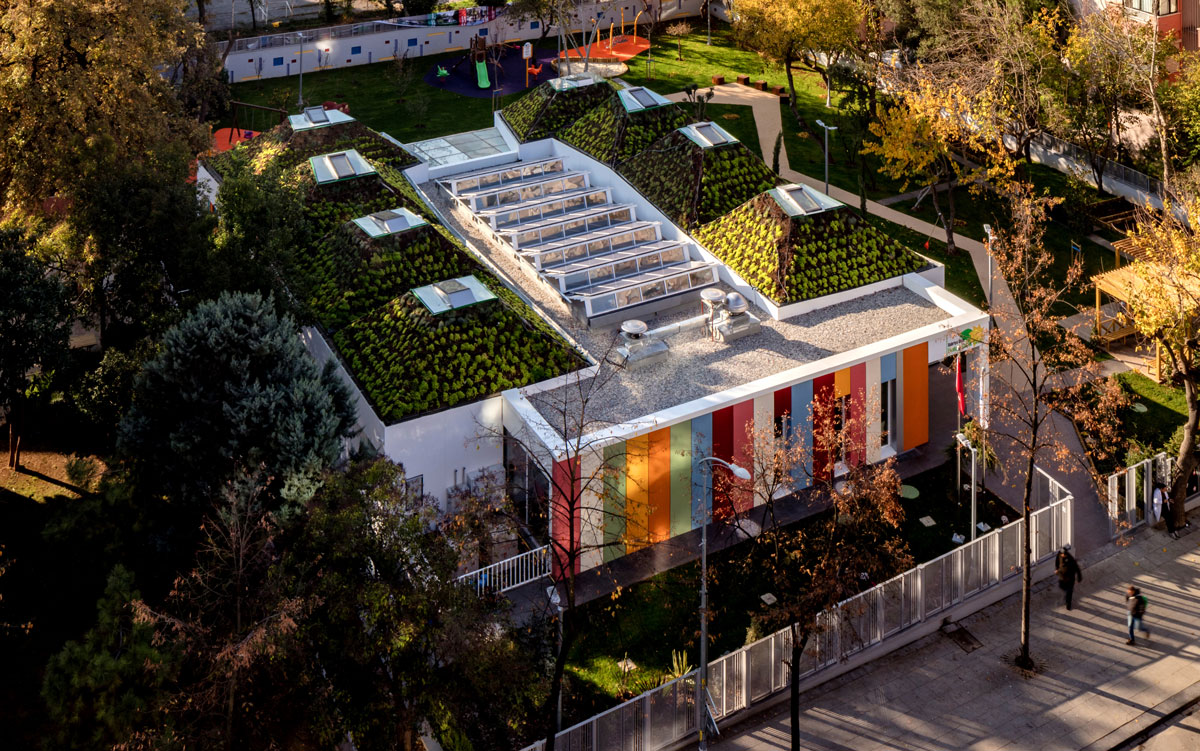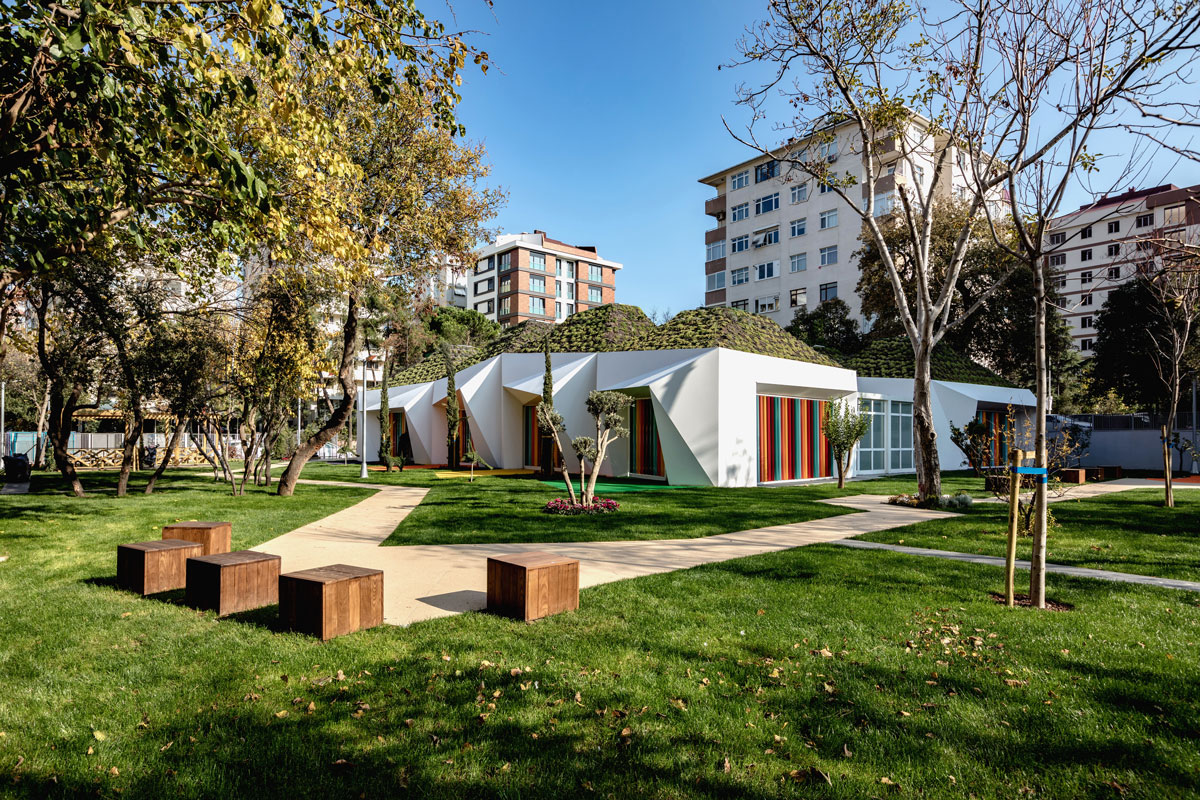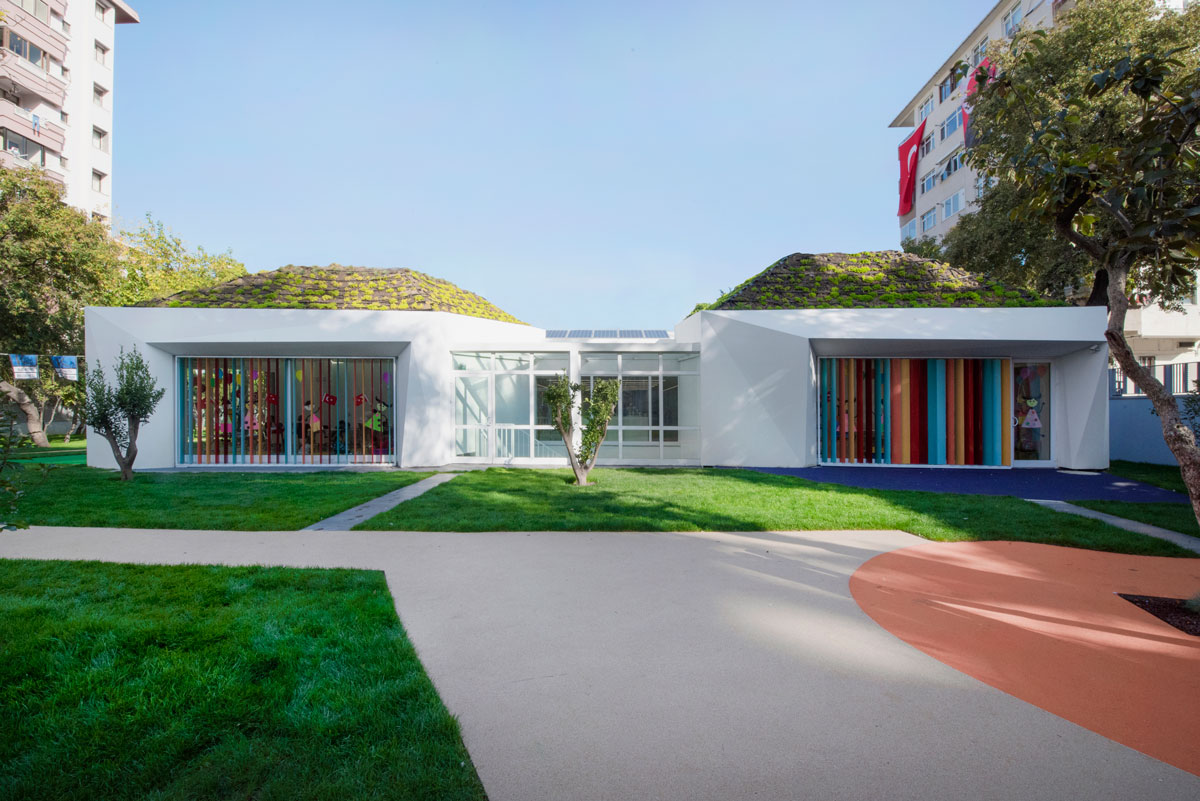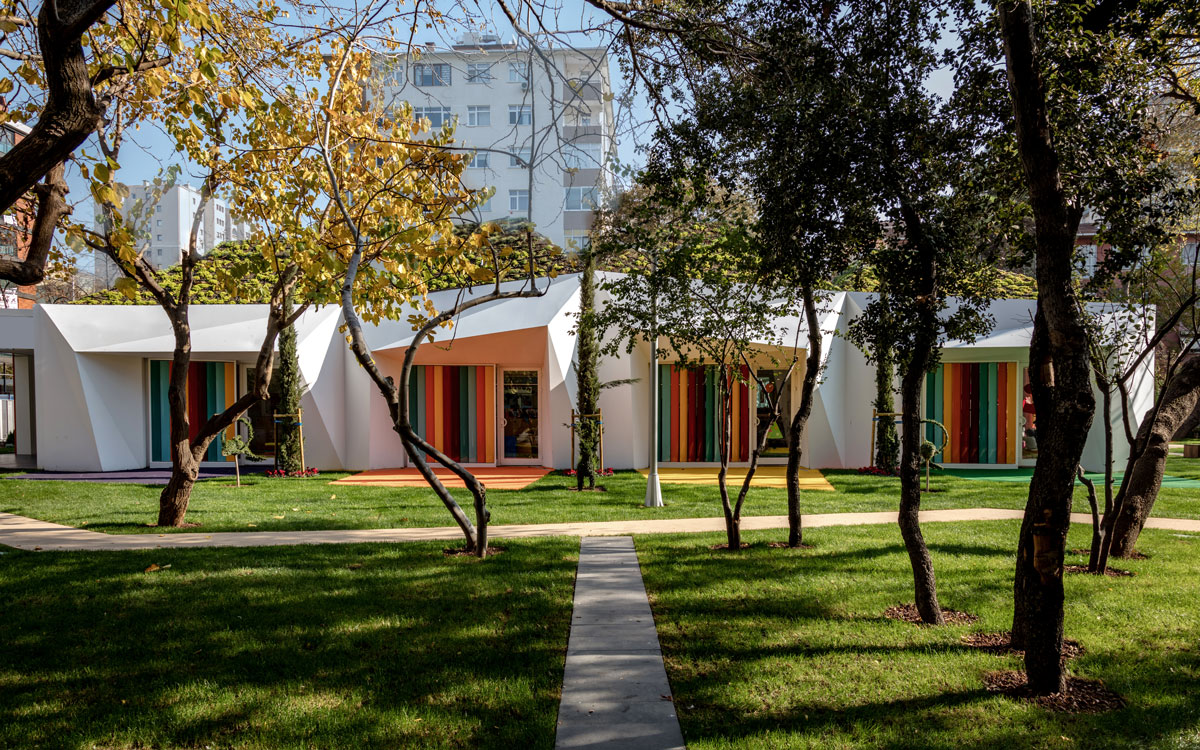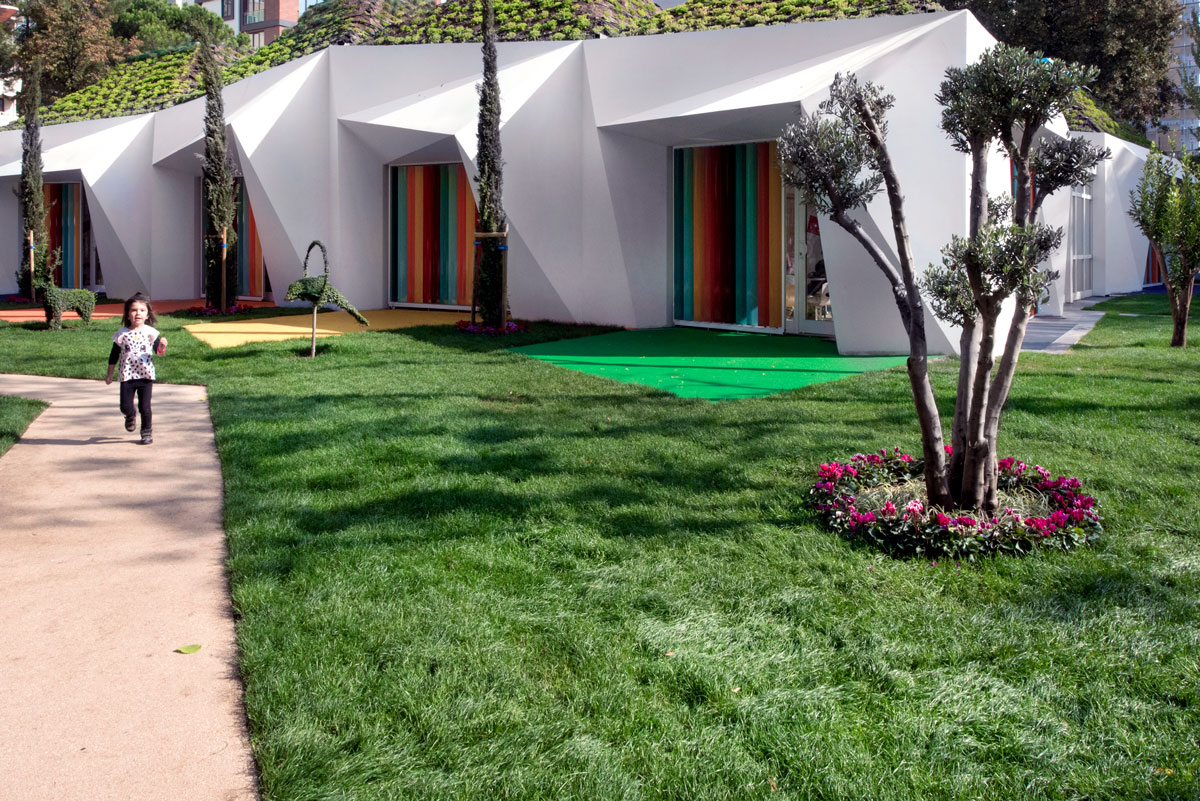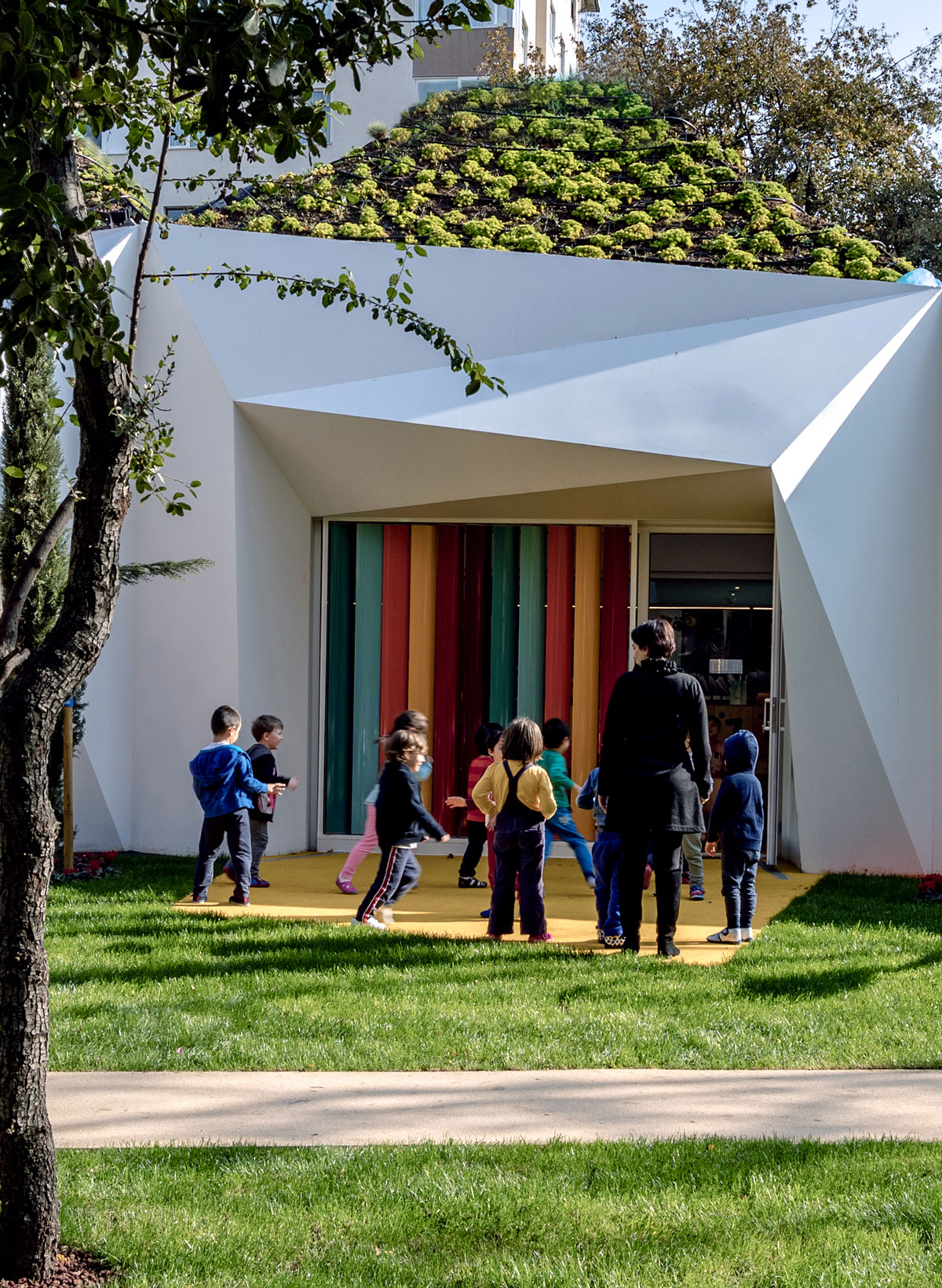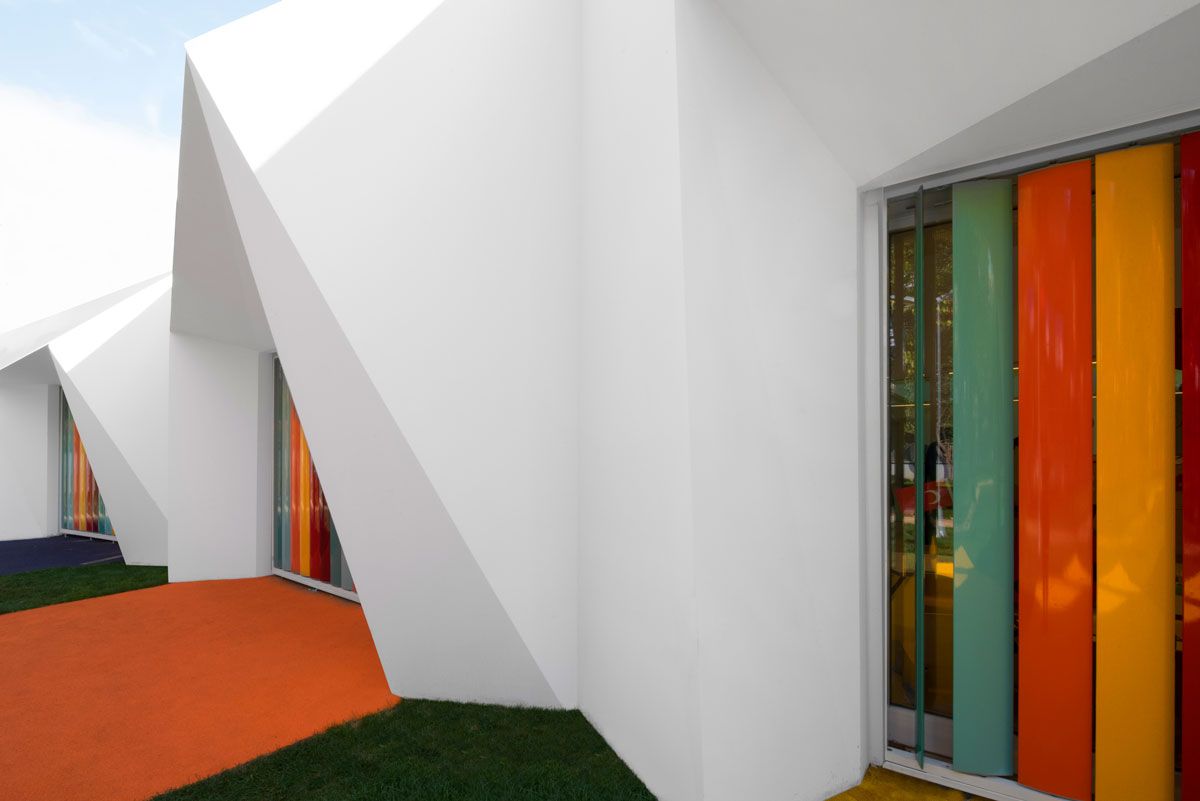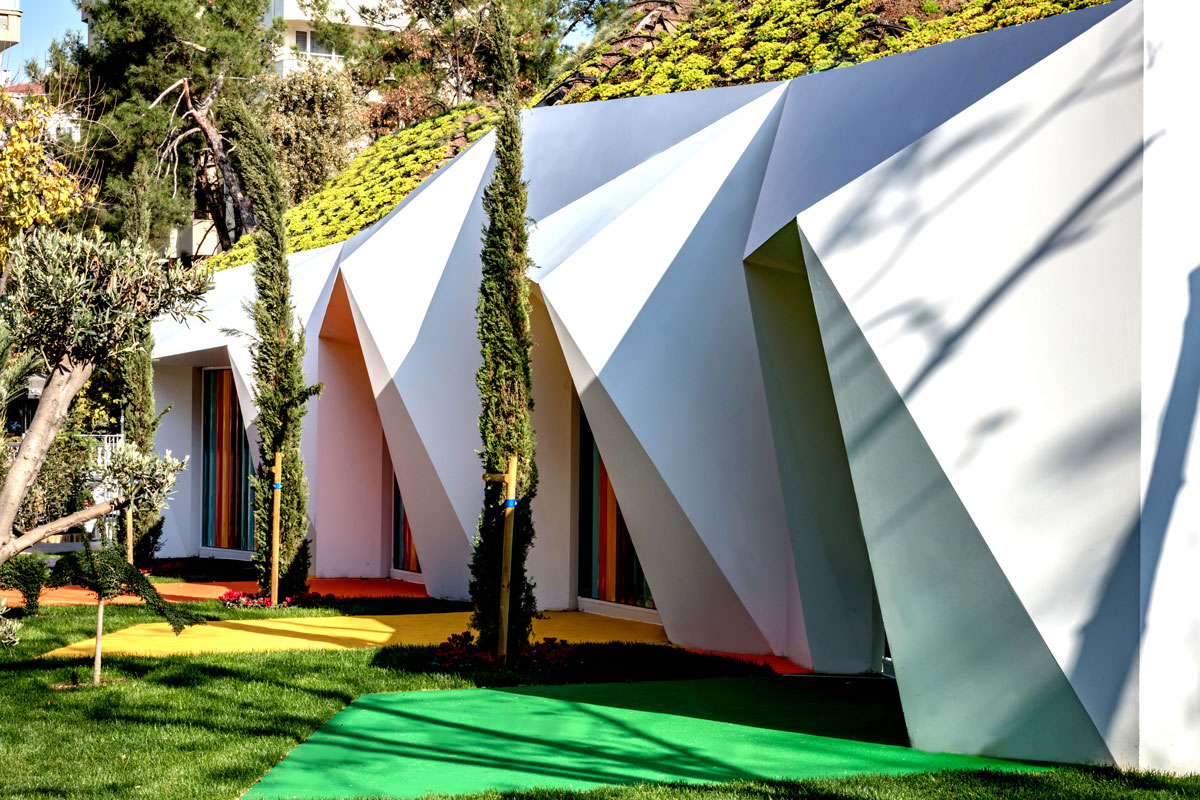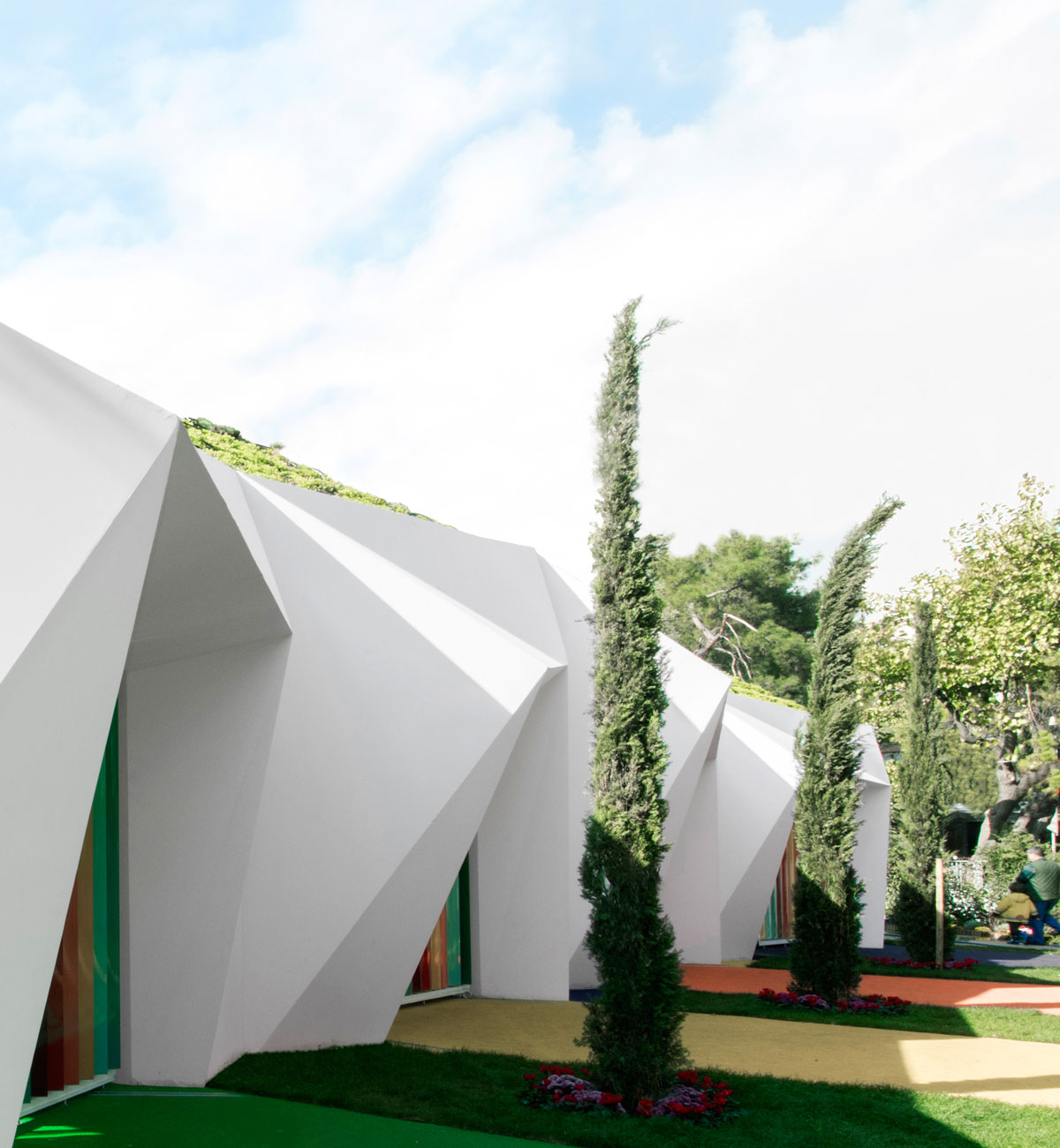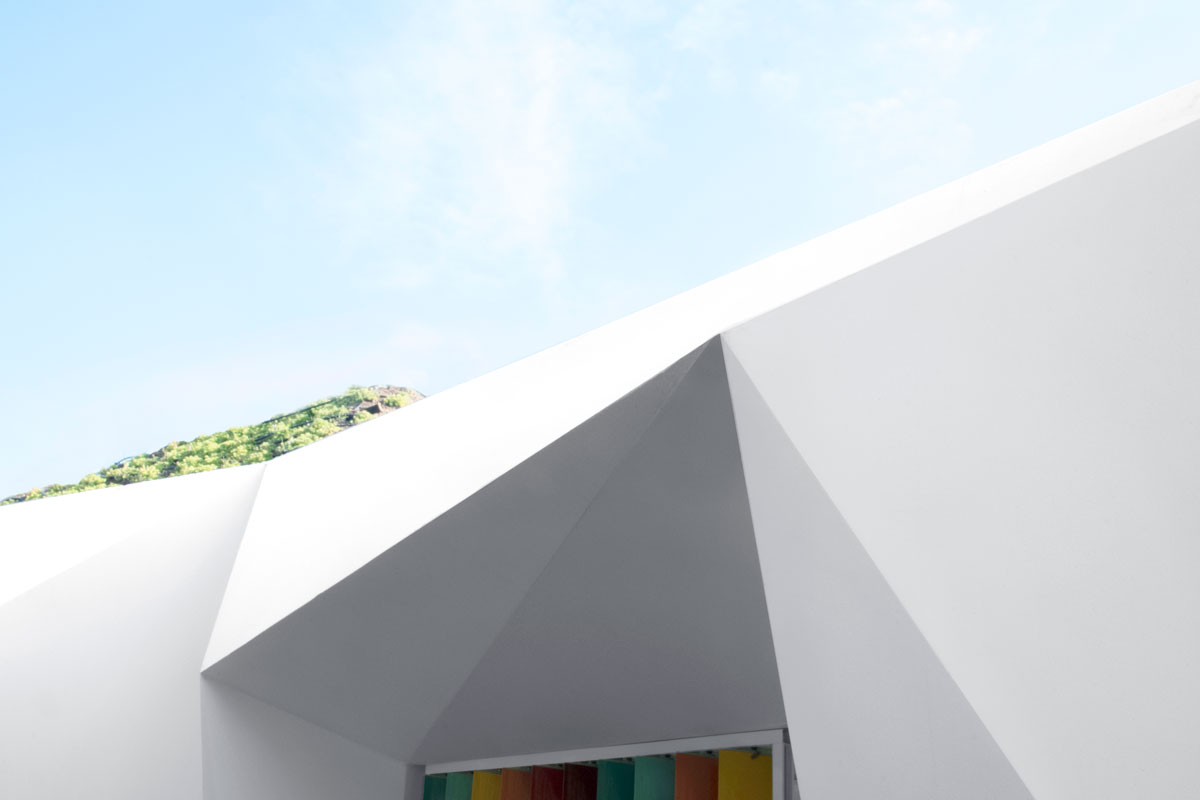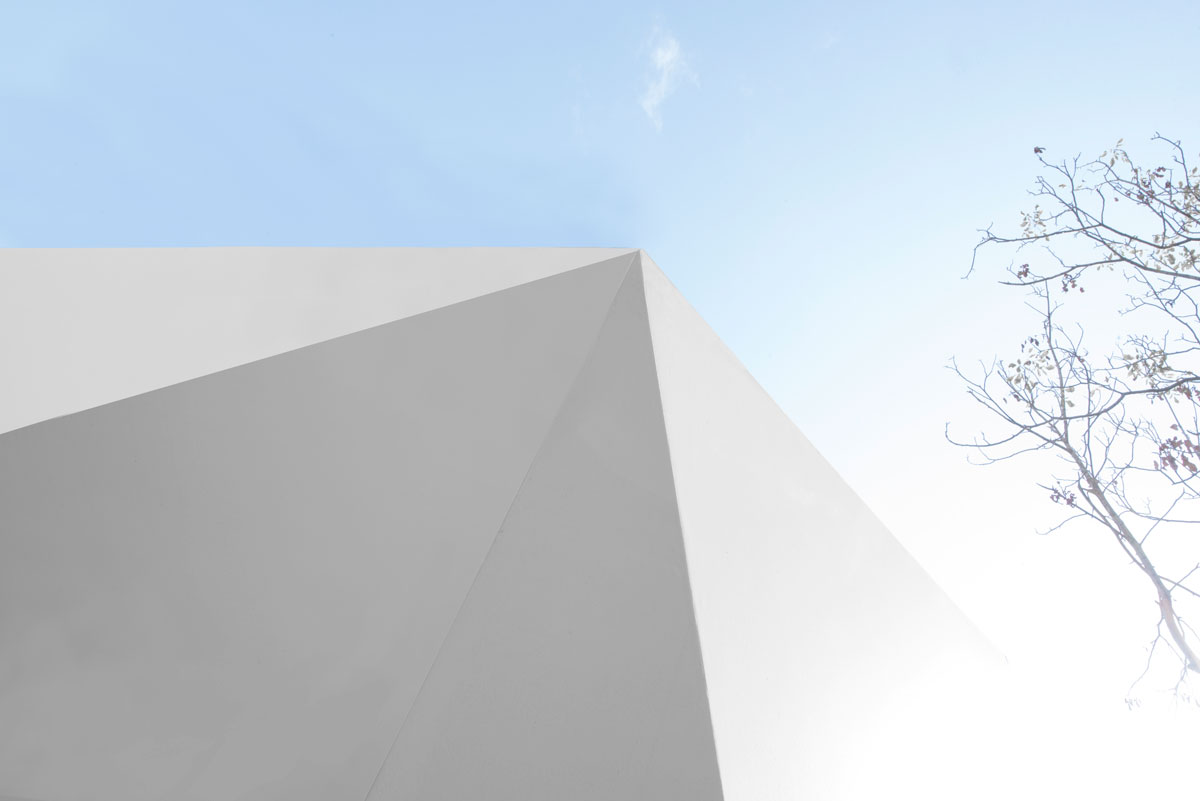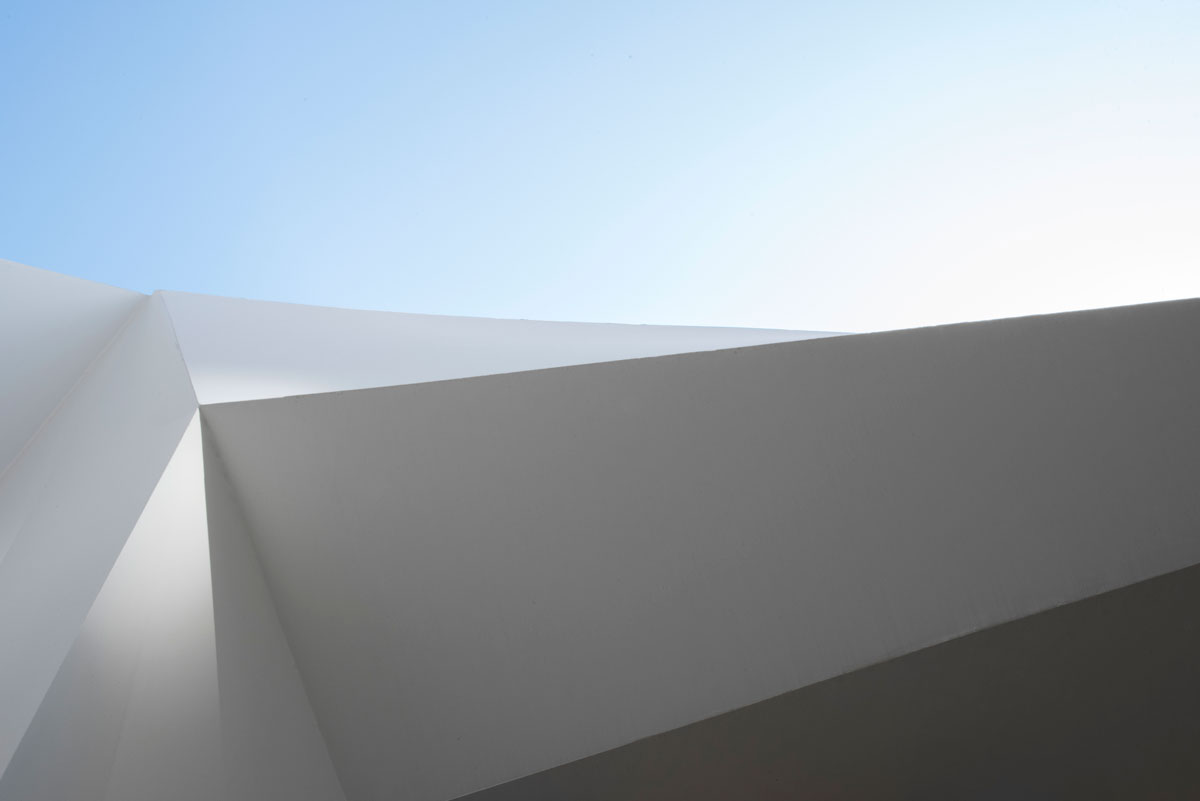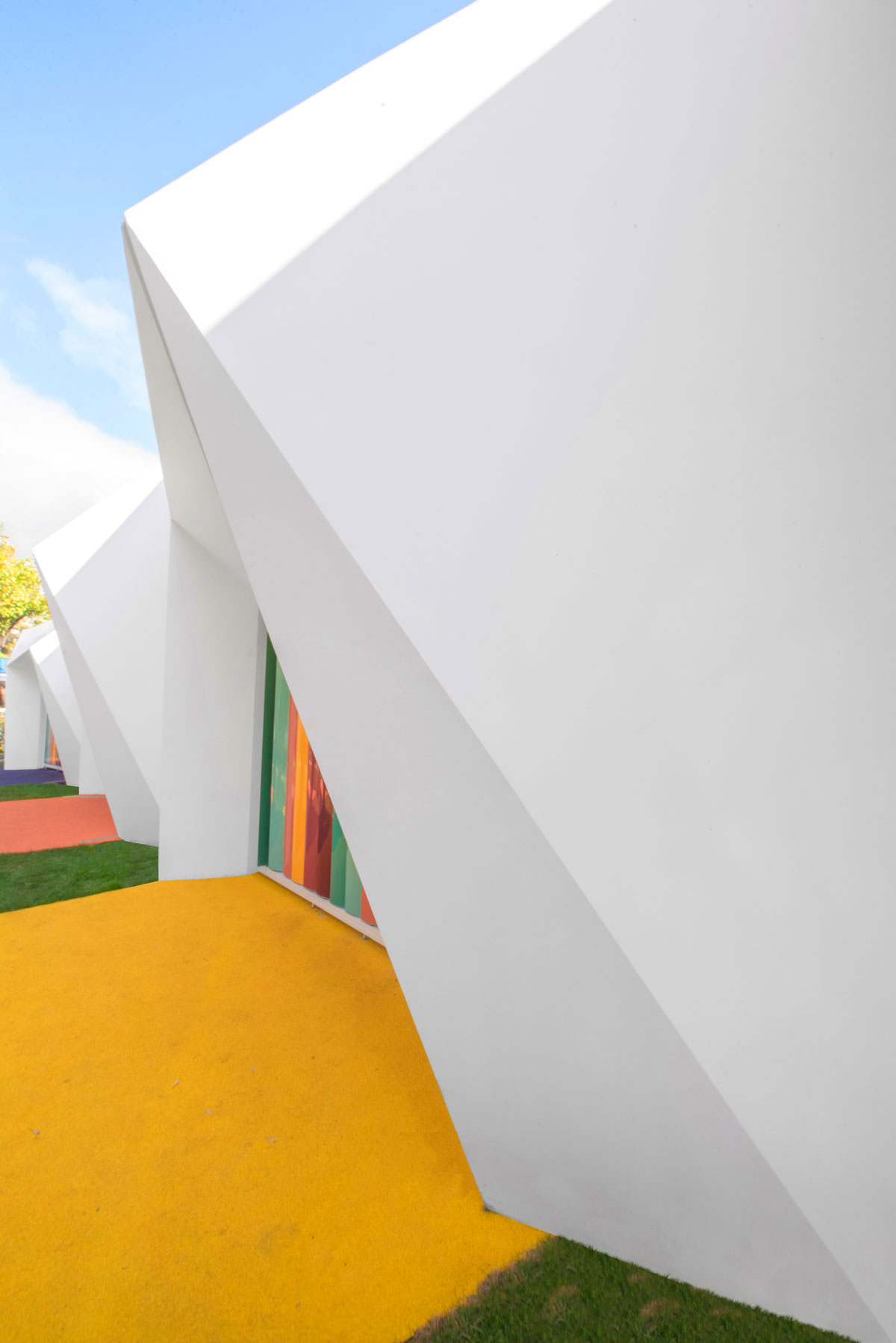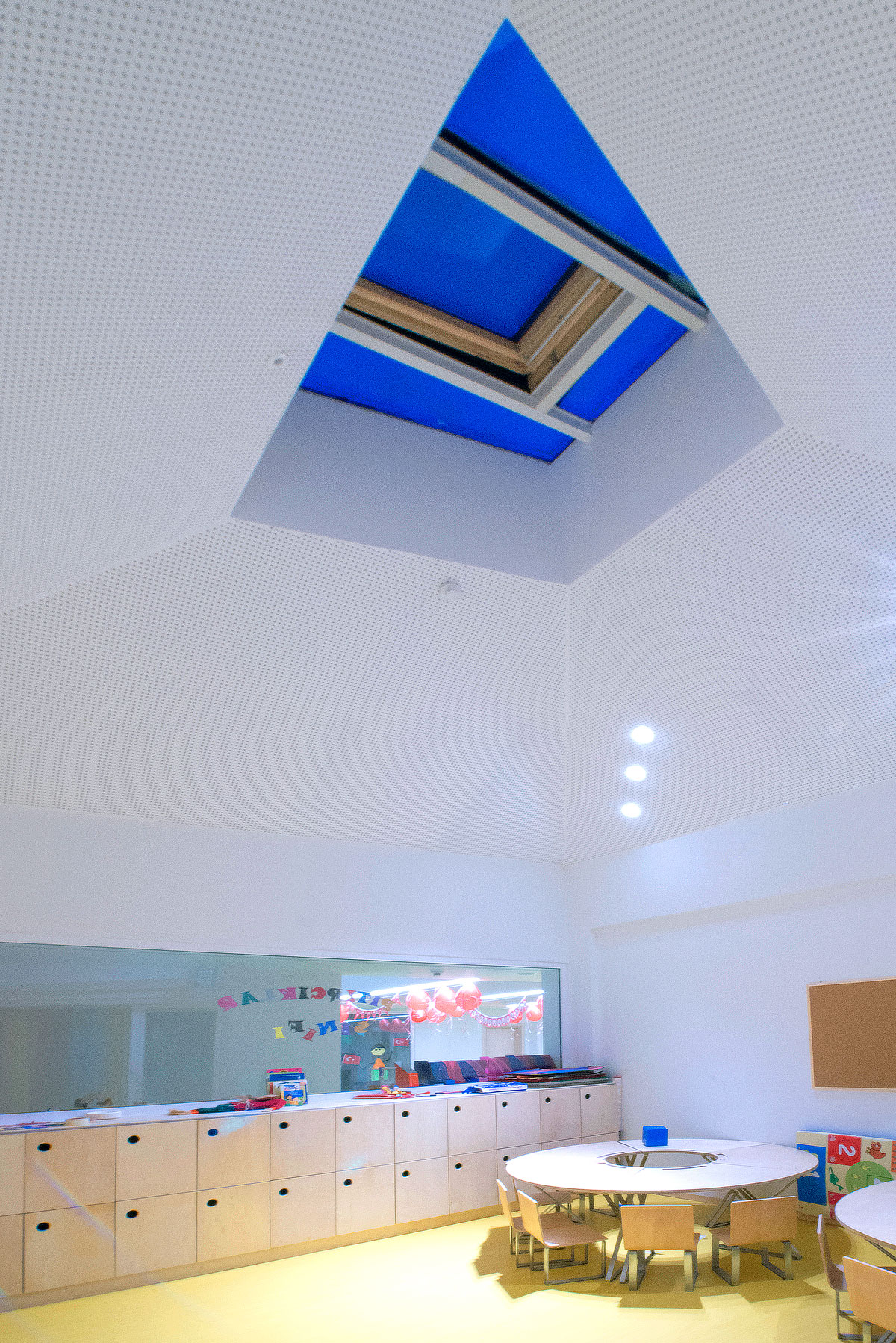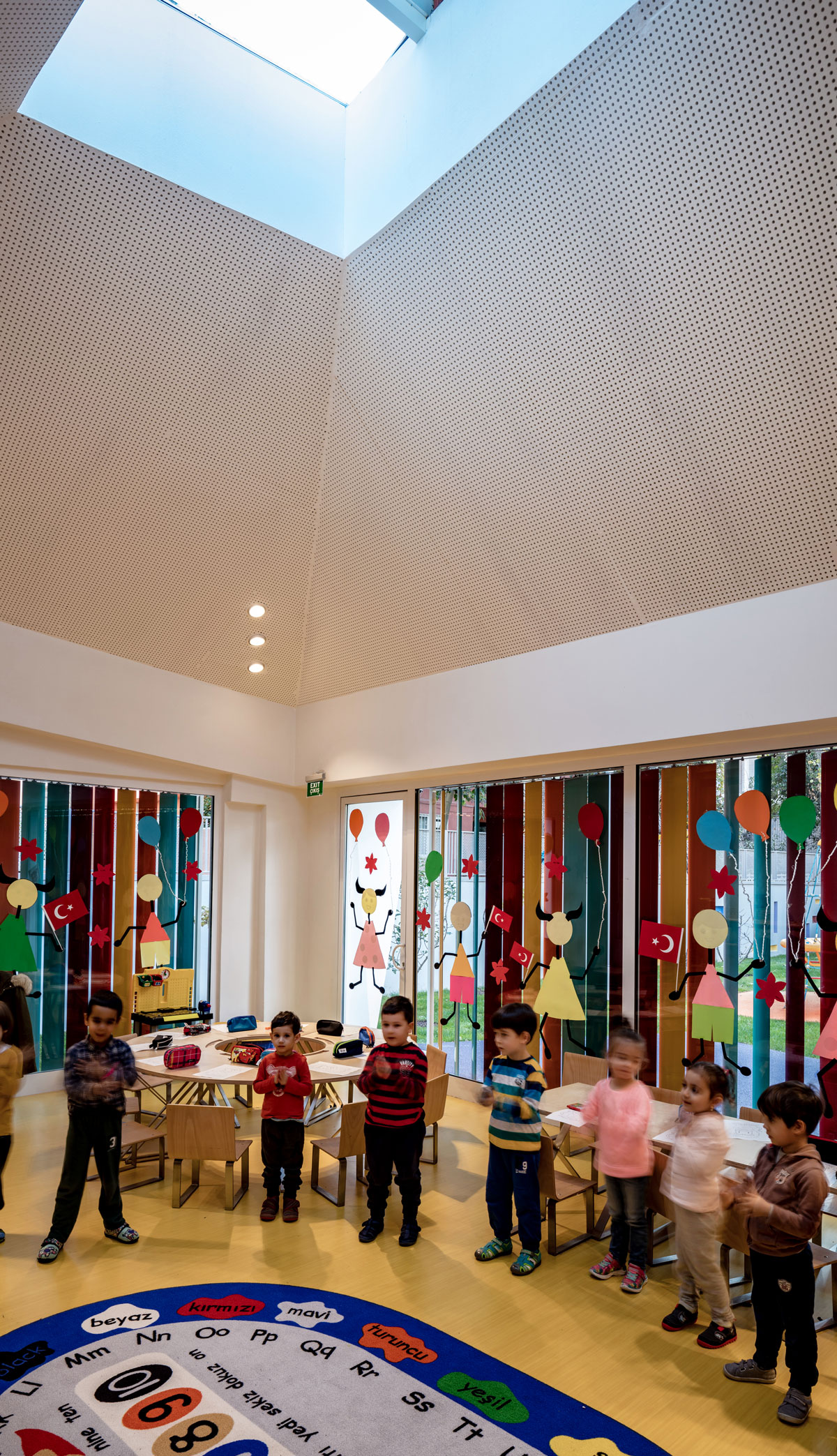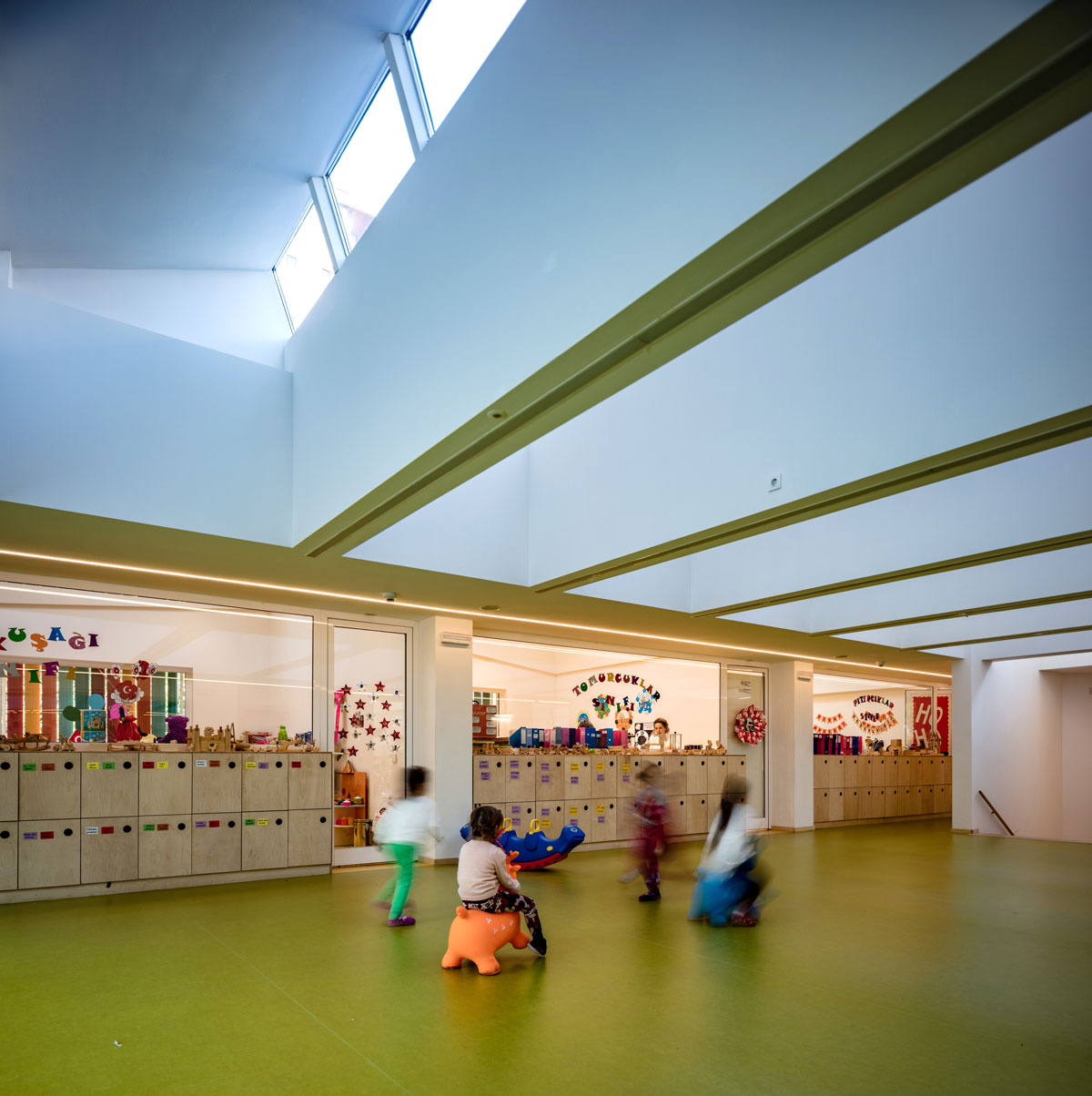WAF 2017 FINALIST
“ORIGAMIC PLAYGROUND”
Located in Kadikoy district of Istanbul, this kindergarten finds itself a cosy place among the developing
metropolis. In cities like Istanbul, fuelled by ever-growing development it is becoming harder to find suitable
places for kids to develop their own identities. The project, located in the center of Istanbul among large
buildings and construction, aims to create a backdrop of an architecture that fuels the imagination of kids who
will be occupying and using the building every day.
Space and time is different for kids, their reality engages beyond the realities of space and time of the present.
Painting, running, playing; whatever their intuition tells them to do is what drives their daily routine. This is a
life different than the rigid, programmed life of an adult. The challenge of the project was to conceive an
architecture that could accommodate the different nature of the childhood.
Kids perceive the world through senses; all the stimulants around them from the early age impacts their mental
development. Architecture, in the same way has a profound impact on the mind through the images it embeds
at an early age. When kids perceive the world through senses, an architecture that uses a language that is
familiar to the kids through forms, light and material and scale becomes a powerful teaching tool. It was our
intention from the beginning to create an architecture that communicates with the kids in a way that kids
would feel comfortable with, and also create a working programmatic model which would ensure the smooth
running of the kindergarten.
To tackle this challenge, we devised an idea that fuses ‘game’ with ‘form’. Starting from the metaphor of a
‘primitive hut’ shaped by the game of origami we devised a formal language. ‘Primitive hut’ is something that is
engraved in the child’s mind; the first thing a child would draw when asked to draw a house is a roof and walls.
It was very important, therefore, to keep this image of primitive hut intact, as it was a familiar image that
invoked a space of belonging and shelter.
The form of the primitive hut is supported by the scale of the project. Kids commute to the building among 15-
20 storey buildings, unable to grasp the scale of the neighbourhood they live in. It was, therefore our intention
to keep the scale at the level that is graspable by the kids. A building of 1200 m2 on a site of 3000 m2 also
creates a contrast to the surrounding neighbourhood in density.
These theoretical issues are also the driving forces of individual decisions and parts of the building. The
primitive hut typology that is repeated 8 times around the building are the classrooms. These classrooms use
the form of the roof to capture the light through an opening at the top, which is then washed on white
acoustical ceiling to provide washed out natural lighting throughout the day. The central play space uses folded
skylights that take in the north light which also produce electricity using PV panels.
The origami-inspired folds of the classroom-huts are designed to break the sunlight coming directly from the
south. Further, a trellis system on the openings allow further modulation of light easily controlled by the
classroom teachers.
Use of natural light is furthered by the winter garden which allows light to sweep into the multifunctioning hall,
while also creating an air gap in winter to maintain building heat expenditure. The basement floor also houses
less light intensive areas: sleeping rooms, labs, and multipurpose rooms. These program is easily accessed by
the garden and the main play area.
Building’s form and MEP systems are designed for sustainability. Sustainable elements of the building are
visible and are intended to be part of the curriculum. There are permaculture areas within the garden.
Skylights, green roof and winter garden as well as the building and furniture materials reflect an understanding
about the environment. Furniture custom designed from sustainable wood sources. The green roof for
instance, absorbs the light, transforms most of it to O2 while also collecting and filtering rain water. The MEP
system is optimized for reduced CO2 emissions.
Location: Kadıköy, İstanbul
Construction area: 1.200 m²
Project year: 2013
Completion year: 2016
Awards: WAF 2017, “Completed Buildings: Schools”, Finalist
Aga Khan Award for Architecture 2019, Nominated
German Design Award 2019, “Excellent Communications Design”, Special Mention
Photographers: Büşra Yeltekin, Orhan Kolukısa

